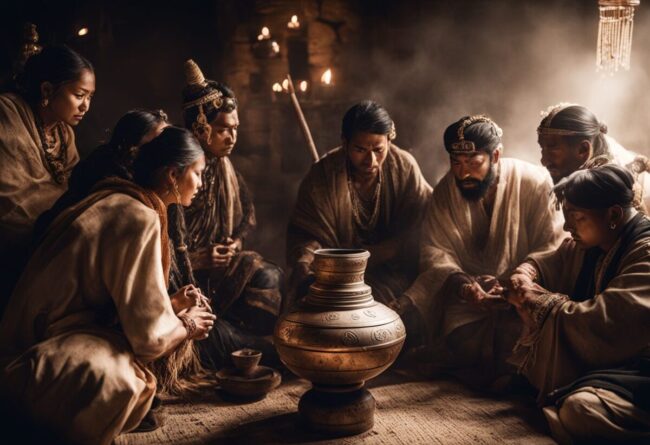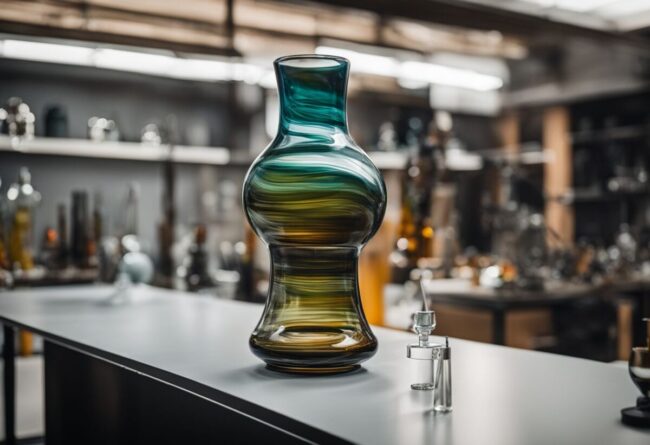
We very often forget that the everyday objects around us have fascinating and long–drawn histories. The bong, for instance, is a popular device used for smoking weed. However, when we scratch the scratch, it becomes clear that its history dates back centuries and encompasses a rich and varied past.
Bongs or water pipes originated in ancient Asian cultures that smoked herbs and tobacco. Bongs’ design, substance, innovation, and more have changed drastically since their invention. 21st-century youth love bongs.
Many US states have legalized and decriminalized marijuana, making bongs more popular. Of course, the battle to make weed legal and restricted is a long journey and an uphill battle.
However, the simmering societal and juridical ‘acceptance’ is a step in the right direction. In the middle of legal and ‘counter-culture’ disputes around pot and bong, we often forget its fascinating and complex history.
We will examine the development of bongs over time, their relevance as smoking devices, and their history in this post. So let’s get started right now!
Origin and Historical Roots of Bongs

The African Origin
The story of Bong does not begin as the intricate glass apparatus we know today. Instead, the early version of the bongs, known as water pipes, were first made in Africa. African tribes would smoke herbs through these devices. The water in the pipe cooled the smoke before it was inhaled. Thus, the enjoyable became all the more enjoyable, and similar to what we enjoy these days. These water pipes or bongs were made of natural materials, like bamboo and gourds.
The Asian Influence
In ancient China, Thailand, and Vietnam. Tobacco and herb smoking were popular among ancient Chinese utilizing bronze, jade, and other expensive bongs. Their use spread throughout the 16th-century Ming Dynasty. Empress Dowager Cixi of the Qing Dynasty loved smoking silver and jade bongs.
Thais were adept at making bamboo opium bongs, whereas the Vietnamese used glass and ceramics. The Silk Route, which connected China to the Middle East and beyond, disseminated numerous items, including bongs, all over the world.
The Mongol Empire’s Impact
As Asia traded and explored, Bongs spread to other cultures. The Mongol Empire, which controlled a vast territory, encompassing Asia and Eastern Europe in the 13th century, is believed to have introduced bongs to Russia and other European communities. For instance, bongs made of clay have been discovered in archaeological digs in Russia and nearby neighboring regions, dating back to the 14th century.
Transition to Modern Designs

The explanation above makes it clear that the bong has a long history dating back hundreds of years. However it was the introduction of bongs into Europe in the 18th and 19th centuries that marked the start of the shift to contemporary shapes. During this period, clay bongs with elaborate decorations were common.
Thereafter, the ‘bong culture’ spread to America wherein the first patents for the glass bong were filed in the 1970s. Thereafter, bongs spread like wildfire throughout the USA. Finally, in the 21st century, glassblowing artists emerged into the scene and started creating bongs that emulated intricate pieces of art. The demand for such bongs is rising rapidly.
Impact of Materials and Technology
The materials and technology used to make the water bong have experienced a phenomenal transformation from ancient times till today. From simple bamboo or metals being the base for bongs, we are now at a point where bongs are composed of superstrong borosilicate glasses that are especially hand-blown and come in an array of colors.
A lot of innovative and advanced materials are used to make the bongs of today’s times. These include:
- Translucent acrylics
- Wooden tubers
- Ceramic
- Silicone
Likewise, the structure and technology used in today’s bongs have changed dramatically. For instance, you can find bongs of different sizes. From portable mini bongs to massive water pipes that are, at times, as tall as 15 feet, there is something for everyone. The thickness of the glass used, the artwork involved, and the intricacy poured in by the artist have become the primary distinguishers of contemporary glass bongs.
Innovative Features and Designs

The innovative features found in the 21st-century bongs have bolstered exponentially. Some of these include:
- Percolator bong design – It includes a suspended glass filter in the water chamber. Thus, the bong breaks up and spreads out bubbles evenly thereby efficiently filtering out toxic materials and offering the best cooling of the smoke.
- Bubbler bong design – It is a hybrid of a typical bong and a pipe. But, the Bubbler bong is lighter, more portable, and horizontally shaped. It has a drop-down water chamber that filters and cools the smoke.
- Mini bong design – These bongs are compact, portable, easy to hold and incredibly lightweight.
- Dabbing bongs or oil rigs – These apparatuses are smaller in size and are equipped with a nail and dome or a domeless nail.
- Scientific bongs – These bongs are made of laboratory-grade borosilicate glasses, which are very strong and incredibly heat-resistant.
Artistic Expression and Customization
It is essential to note that contemporary bongs are not mere devices for people to smoke up. They have emerged as standout artworks that are created by meticulous glass-blowing, engraving, and painting techniques. People’s enthusiasm towards artistic bongs has increased exponentially.
Functional Efficiency and User Experience

Another pertinent taking over the world of bong is functionality and user experience. Along with aesthetics and beauty, the bongs popular in today’s day and age are devised to cater to the user’s unique needs and be as functional as possible.
Future Trends and Possibilities
The legalization and decriminalization of bongs is increasing rapidly. Thus, in the future, we can expect to see a rising use and need for bongs. Moreover, manufacturers will leverage more technology to ensure that smokers get the best experience.
Conclusion
So, there we have it, a crisp overview of the history of bongs – from ancient times till today. The history of the bong has been fascinating and the future seems all the more exciting.
